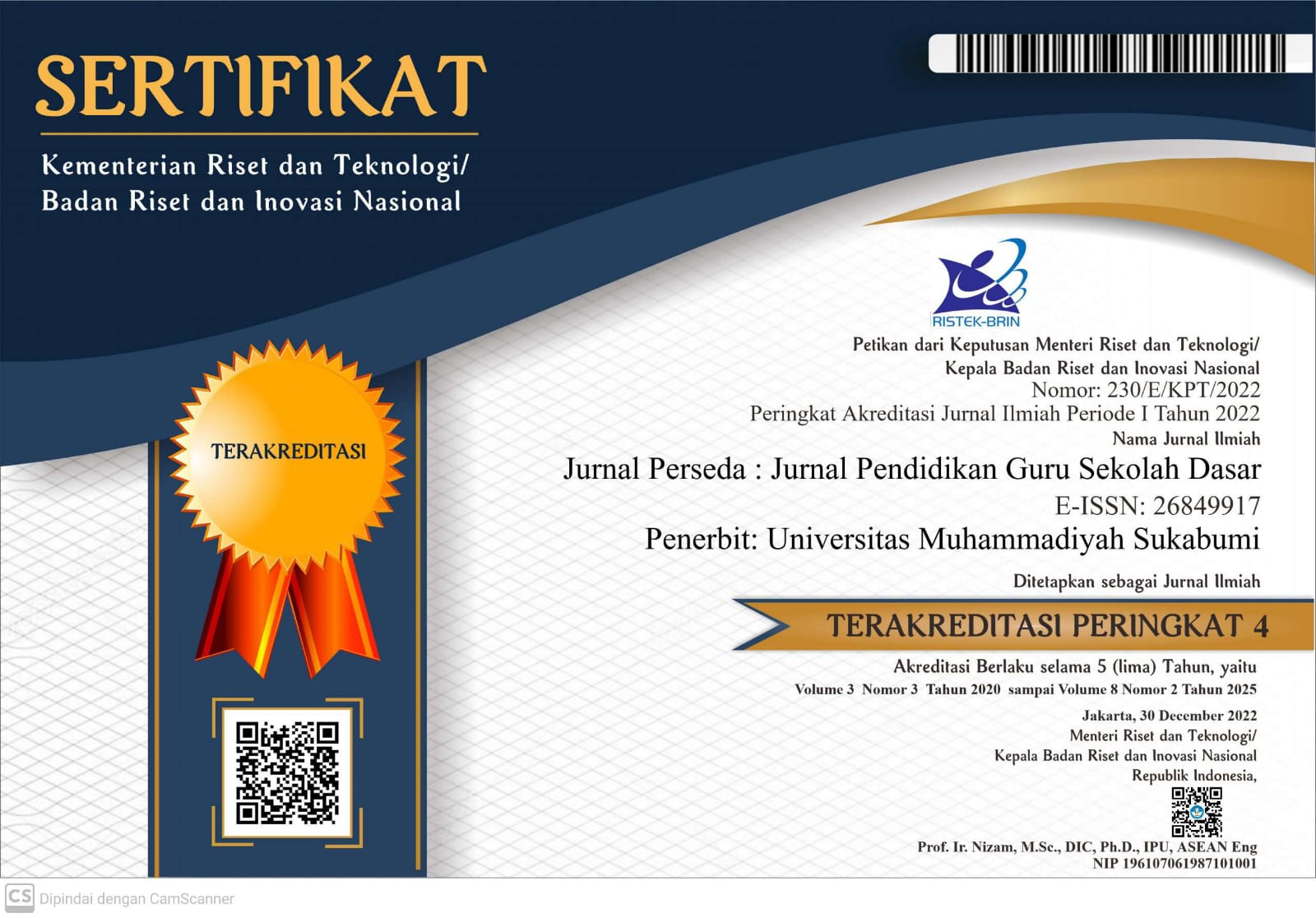Indonesia Pengembangan Video Animasi Menggunakan Konteks Rumah Adat Betawi untuk Pembelajaran Bangun Datar Kelas III Sekolah Dasar
DOI:
https://doi.org/10.37150/perseda.v7i2.2310Keywords:
Plane Figures, Betawi Traditional House, Animation Video.Abstract
This research is motivated by the desire to expand students' knowledge through learning media in the form of animated videos that utilize the cultural context of Betawi traditional houses, with the hope of providing a visual experience of both mathematics and the cultural aspects of traditional houses. The objective of this research is to develop animated videos using the Betawi traditional house context, specifically covering the properties of plane figures, such as squares, rectangles, trapezoids, and triangles, to determine the validity of the developed animated video media and to measure students' understanding after using the animated video media. The research method employed is Research and Development (R&D) using the 4D model (define, design, develop, and disseminate). The results of media expert validation from both validators obtained an average percentage of 95.8%, which falls under the "very feasible" criteria. The validation from subject matter experts received an average percentage of 82.3%, also considered "very feasible." Language learning expert validation received an average percentage of 83%, meeting the "very feasible" criteria. The overall average percentage from all validators was 87%, indicating "very feasible" validation. Empirically, the average N-gain between pretests and posttests was 0.47, categorizing as "moderate." In conclusion, animated videos can be used in mathematics education as they are considered suitable for enhancing students' understanding of mathematical concepts and can facilitate their learning process.








